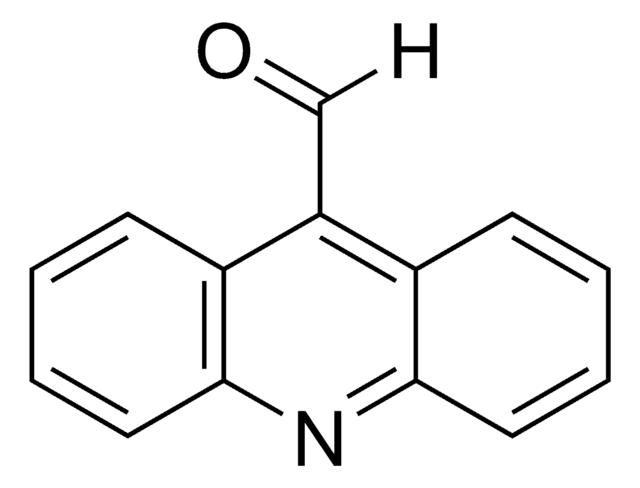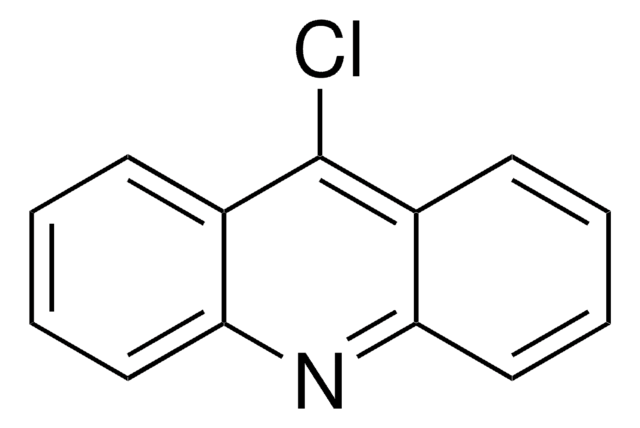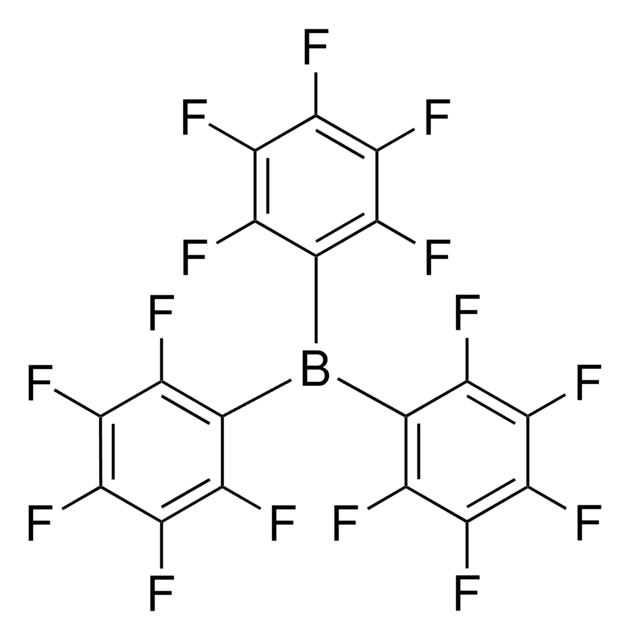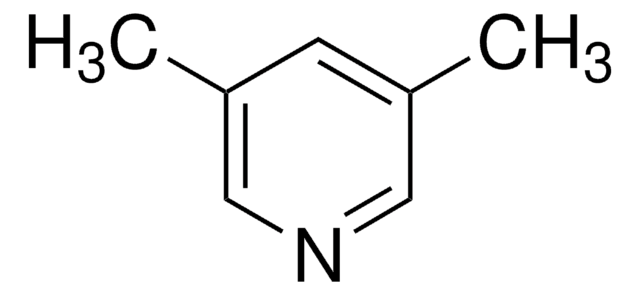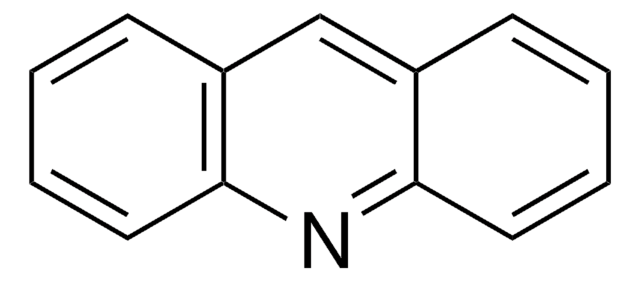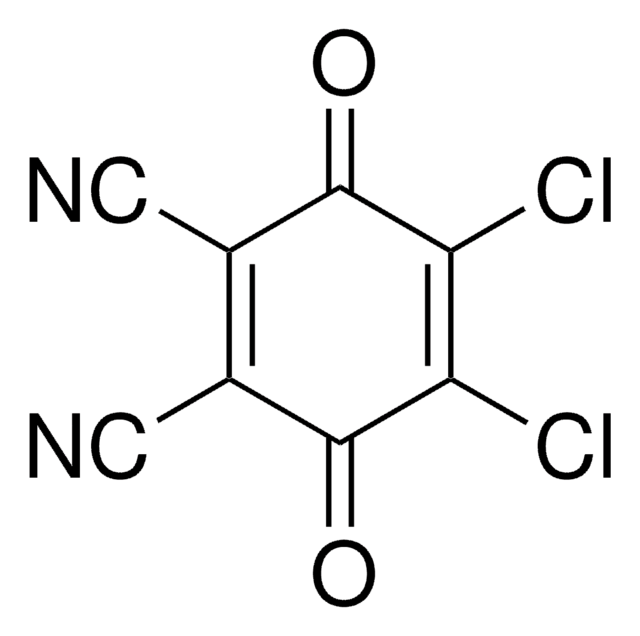Alle Fotos(2)
Wichtige Dokumente
145688
6,9-Dichlor-2-methoxyacridin
97%
Anmeldenzur Ansicht organisationsspezifischer und vertraglich vereinbarter Preise
Alle Fotos(2)
About This Item
Empirische Formel (Hill-System):
C14H9Cl2NO
CAS-Nummer:
Molekulargewicht:
278.13
EG-Nummer:
MDL-Nummer:
UNSPSC-Code:
12352100
PubChem Substanz-ID:
NACRES:
NA.22
Empfohlene Produkte
Qualitätsniveau
Assay
97%
Form
solid
mp (Schmelzpunkt)
163-165 °C (lit.)
Funktionelle Gruppe
chloro
SMILES String
COc1ccc2nc3cc(Cl)ccc3c(Cl)c2c1
InChI
1S/C14H9Cl2NO/c1-18-9-3-5-12-11(7-9)14(16)10-4-2-8(15)6-13(10)17-12/h2-7H,1H3
InChIKey
RYRNQWYNHLLOGX-UHFFFAOYSA-N
Allgemeine Beschreibung
6,9-Dichloro-2-methoxyacridine on reaction with quinolizidinylalkylamines yields 4-aminoquinoline and 9-aminoacridine derivatives.
Anwendung
6,9-Dichloro-2-methoxyacridine was used in the synthesis of 9-amino-6-chloro-2-methoxyacridine, N′-(6-Chloro-2-methoxy-acridin-9-yl)-heptylamine and N,N′-bis-(6-chloro-2-methoxy-acridin-9-yl)-hexane-1,6-diamine.
Signalwort
Danger
H-Sätze
Gefahreneinstufungen
Eye Irrit. 2 - Resp. Sens. 1 - Skin Irrit. 2 - Skin Sens. 1 - STOT SE 3
Zielorgane
Respiratory system
Lagerklassenschlüssel
11 - Combustible Solids
WGK
WGK 3
Flammpunkt (°F)
Not applicable
Flammpunkt (°C)
Not applicable
Persönliche Schutzausrüstung
dust mask type N95 (US), Eyeshields, Faceshields, Gloves
Hier finden Sie alle aktuellen Versionen:
Besitzen Sie dieses Produkt bereits?
In der Dokumentenbibliothek finden Sie die Dokumentation zu den Produkten, die Sie kürzlich erworben haben.
Origin of the complex fluorescence emission of 9-amino-6-chloro-2-methoxyacridine. 1. Experiment.
Fan P, et al.
The Journal of Physical Chemistry, 93(18), 6615-6622 (1989)
C Boido Canu et al.
Bollettino chimico farmaceutico, 128(6), 212-215 (1989-06-01)
By reacting three quinolizidinylalkylamines with 4,7-dichloroquinoline and 6,9-dichloro-2-methoxyacridine six derivatives of 4-aminoquinoline and 9-aminoacridine were obtained. These compounds, which are of interest as potential antibacterial, antiprotozoarian, anti-helminthic and antitumoral agents, so far have been tested against lymphocytic leukemia P 388
Lucie Guetzoyan et al.
Bioorganic & medicinal chemistry, 17(23), 8032-8039 (2009-11-03)
A series of acridine derivatives were synthesised and their in vitro antimalarial activity was evaluated against one chloroquine-susceptible strain (3D7) and three chloroquine-resistant strains (W2, Bre1 and FCR3) of Plasmodium falciparum. Structure-activity relationship showed that two positives charges as well
Ana Gomes et al.
ChemMedChem, 9(2), 305-310 (2014-01-30)
Plasmodium falciparum, the causative agent of the most lethal form of malaria, is becoming increasingly resistant to most available drugs. A convenient approach to combat parasite resistance is the development of analogues of classical antimalarial agents, appropriately modified in order
Unser Team von Wissenschaftlern verfügt über Erfahrung in allen Forschungsbereichen einschließlich Life Science, Materialwissenschaften, chemischer Synthese, Chromatographie, Analytik und vielen mehr..
Setzen Sie sich mit dem technischen Dienst in Verbindung.